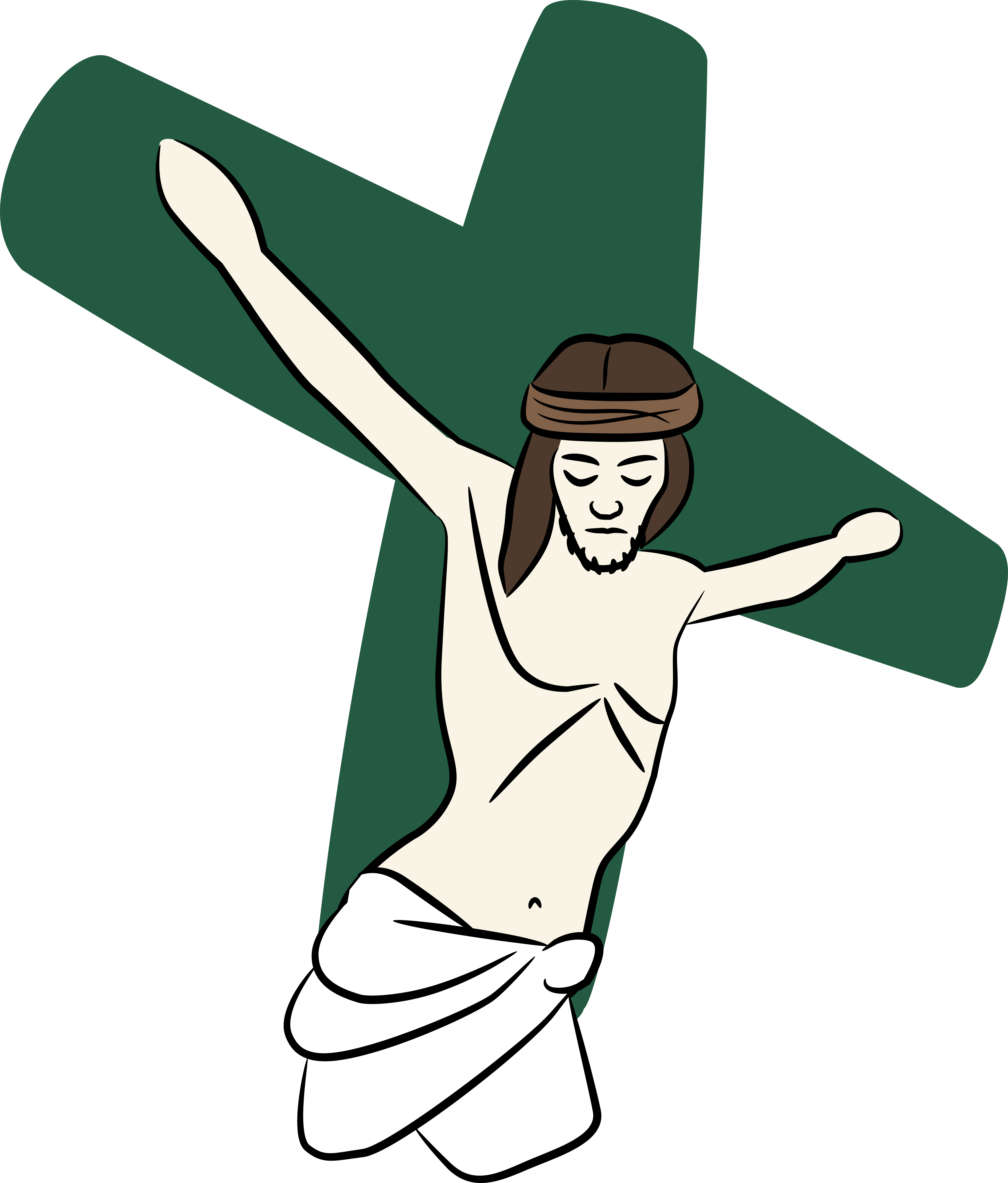Simon of Cyrene: The Cross, Now Carried
Simon of Cyrene: The Cross, Now Carried
March 26th, 2025
INI
Who is Jesus of Nazareth? Anyone who’s ever heard of him has had to answer this question in one way or another. It’s a question that’s been asked ever since Jesus’ earthly ministry. All throughout the Gospel accounts, people asked this question. It’s asked when Jesus taught in the synagogue (Mk 1:21-28). The crowds asked the question after Jesus’ miracles (Lk 7:49). The disciples themselves even raised the question after the wind and waves obeyed his voice (Mk 4:41). Pilate asked Jesus, “Who are you? Are you the King of the Jews?” Behind this question asked by so many people is this: Could this Jesus of Nazareth be the Messiah?
Messianic expectation was at an all-time high for the Jewish people, as Jerusalem dealt with the Roman occupation of the Promised Land. Simon of Cyrene wouldn’t be an exception to that. Simon was from Cyrene, a town in Libya in North Africa. Off the African coast, Cyrene was a Greek city in which Jews settled in large numbers. So, why was Simon of Cyrene so far from home when he carried our Lord’s cross? Mosaic Law required Jews to offer the Passover at the place the Lord chose. Jerusalem was that place, and every Jew tried at least once in their life to make it to the Holy city for the sacrifice. That’s what brought Simon there. He was there for a once in a lifetime pilgrimage to the holy city for the feast of the Passover. But he probably didn’t expect the Passover Lamb to be a man.
Jewish nationalism and the expectation of the Messiah were deeply intertwined. Even today, similar connections can be seen. However, these expectations were often based on a misunderstanding of the Messiah’s true nature. In Jesus’ time, including for Simon, many were well-versed in the Old Testament prophecies concerning the coming Christ. They knew the prophesy that a descendent of David would rule over God’s people with peace and harmony. They knew that he’d burst onto the scene and set up the messianic age, initiating God’s kingdom on earth. They knew that Israel’s enemies would be destroyed, and blessings would abound. And they thought that maybe this Suffering Servant figure from Isaiah 53 could be connected to the identity of the Messiah. But if so, how could a King suffer for a nation?
It didn’t make sense according to reason. But the prophetic Word was there to connect this messianic figure to the person of Jesus. For example, Isaiah 25:10-11 says “The hand of the Lord will rest on this mountain… God will bring down their pride despite the cleverness of their hands.” And Psalm 22:16 says “Dogs have surrounded me; a band of evil men has encircled me, they have pierced my hands and feet.” At the time of Jesus’ ministry, no one had put together that the Messiah would be one who engages in horrific suffering. Only because of what we know about the death and resurrection of Jesus, are we able to piece it all together.
No one really knows what Simon of Cyrene expected of the Messiah. Though, we can confidently say that he didn’t expect to carry the cross of someone condemned as a criminal. Yet, there he was – carrying the cross for the Word of God made flesh.
We don’t really know what Simon knew about Jesus. We don’t really know how long he had stayed at the foot of Jesus’ cross. But we do know that when Mark mentions Simon of Cyrene in his Gospel, he says that Simon is the father of “Alexander and Rufus” (Mark 15:21). Now, Mark would only include this distinction if Alexander and Rufus were well-known throughout the church. It’s possible that this is the same Rufus that greeted Paul in Romans 16 as the leader of the Roman congregation. It seems that the mentioning of Simon’s two sons tells us what Simon of Cyrene eventually believed about Jesus of Nazareth.
Without realizing it, Simon of Cyrene helped carry the Messiah’s instrument of healing for God’s people – just as Jesus had prophesied in John 3:14-15 “Just as Moses lifted up the snake in the desert, so the Son of Man must be lifted up, that everyone who believes in him may have eternal life.” In that way, the cross helps answer the questions many had about the coming Messiah. He is indeed the suffering servant from Isaiah 53. “He was despised and rejected by men, a man of sorrows, and familiar with suffering. Like one from whom men hide their faces he was despised and we esteemed him not.” That word ‘esteemed’ there in the text means that they didn’t recognize who he was or what he was doing.
But that doesn’t mean that the cross was an accident. It wasn’t just a sad miscarriage of justice. It was a part of God’s plan of salvation. As Isaiah says, the Father in heaven smote His Son, the suffering servant – “Surely he has borne our griefs and carried our sorrows, we esteemed him stricken, smitten BY GOD, and afflicted.” “But he was wounded for our transgressions, he was bruised for our iniquities; upon him was the chastisement that made us whole, and with his stripes we are healed.”
The Son suffered so that we might life. He who knew no sin became sin, so that in him, we might become the righteousness of God. At the cross, a blessed exchange happens. He takes all our punishments. We get all the benefits.
This glorious truth is exactly what the Word of God had foretold. The Scriptures proclaimed the Messiah as the suffering Servant—a reality that the Scribes and Pharisees failed to see. Yet, the prophecies of the Old Testament were fulfilled in Jesus of Nazareth, revealing Him as the long-awaited Christ. Though many rejected Him, those with eyes of faith recognize that He is indeed the fulfillment of God’s promise to His people, leading us to confess with certainty: “Truly, this is the Son of God.”
It became real as it unfolded. Jesus’ crucifixion was no accident. Nor was what happened to Jesus just coincidence. It happened just as the prophets had foretold, for this was God’s plan from the foundation of the world. And Simon of Cyrene was an active participant in the most important event in history, helping us to answer the question, Who is Jesus of Nazareth?
But here’s the thing—Simon wasn’t just there that day. He carried the cross. He bore the weight of the instrument of death that would bring life to the world. He didn’t volunteer. He was compelled. Yet, through that act, he was drawn into the very heart of God’s salvation.
And isn’t that the way of the cross? None of us naturally choose it. We resist suffering. We recoil from sacrifice. We would rather stay on the sidelines than walk the path of Jesus. Yet Christ calls us to follow Him, to take up the cross daily, and to find in it not just suffering, but life.
Simon’s journey to Jerusalem that Passover was meant to be a once-in-a-lifetime pilgrimage. But God had something greater in store for him—an encounter with the true Passover Lamb. We don’t know what Simon expected when he came to the holy city. But by the time he left, he had touched the very cross of Christ. And that changed everything.
So too for us. Every time we come to this place—to hear His Word, to receive His Body and Blood—we come into contact with the cross of Christ. We do not carry it as Simon did, but we bear its mark in our Baptism. We live under its promise. We cling to it as our only hope. And in the end, the cross that Simon carried for a moment is the same cross that carries us for eternity.
With Simon, with the centurion, with all who have been drawn to Jesus by the power of His sacrifice, we confess: Truly, this is the Son of God.
INI
Recent Sermons
The Ascension of Christ for our Benefit
May 28, 2025
The Only Mediator
May 28, 2025
Your Advocate, the Holy Spirit
May 15, 2025


